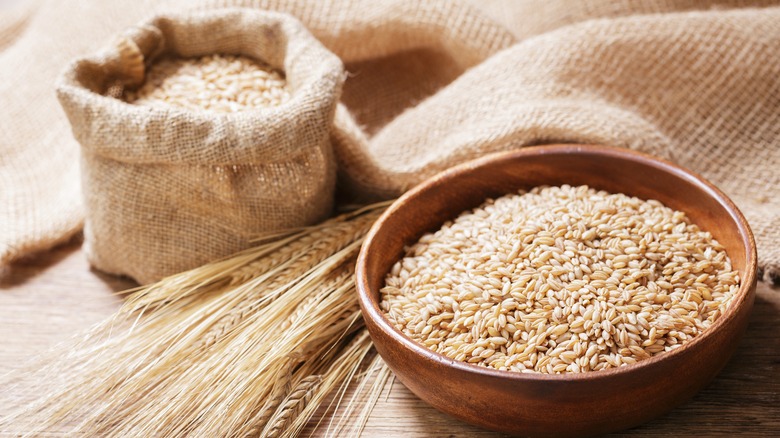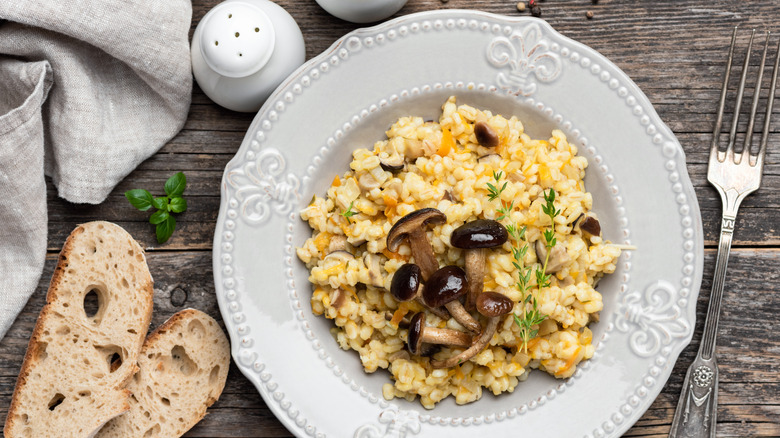Why You Should Always Keep Barley In Your Pantry
Consuming barley dates back to 8,000 B.C., as reported by Britannica. This ancient grain has a nutty flavor and slightly chewy texture that's comparable to brown rice or farro. Beyond its history and flavor, barley is a healthy, shelf-stable food. And as Medical News Today points out, it is full of nutrients, including fiber, protein, and iron. Since it has high fiber content, as The Mediterranean Dish explains, barley expands up to three its volume once it's cooked, making it very filling.
Serious Eats further notes that this ingredient is a valuable part of wintry meals, such as adding it to soups and stews with so many nutrients and benefits. But you shouldn't just enjoy its nutrient-dense and healthy attributes for only a small part of the year. If you rarely (or never) cook with barley, you might want to reconsider since it makes a healthy addition to dishes, yet it's substantial enough to be the star of almost any recipe.
How to use barley in recipes
Despite all the positive news surrounding barley, it doesn't get the attention of popular grains like quinoa or farro. Maybe that's because it seems intimidating to prepare, or word hasn't spread about its versatility. Cooking barley is a fairly straightforward process, similar to cooking rice or other grains, per The Kitchn. According to the Los Angeles Times, the ancient grain can easily be elevated beyond wintery meals, including using it for breakfast dishes or healthy bowl recipes.
You don't have to stop with those recipes, though. Adventurous and creative cooks can also try swapping out rice or pasta and replacing it with barley. For example, as noted in a recipe by Epicurious, you can make barley stuffed bell peppers using this versatile grain instead of rice. Or try making a barley risotto with prawns and peas pesto, as shared by Delicious. No matter the season, barley is an ingredient that should be a staple in your pantry.

